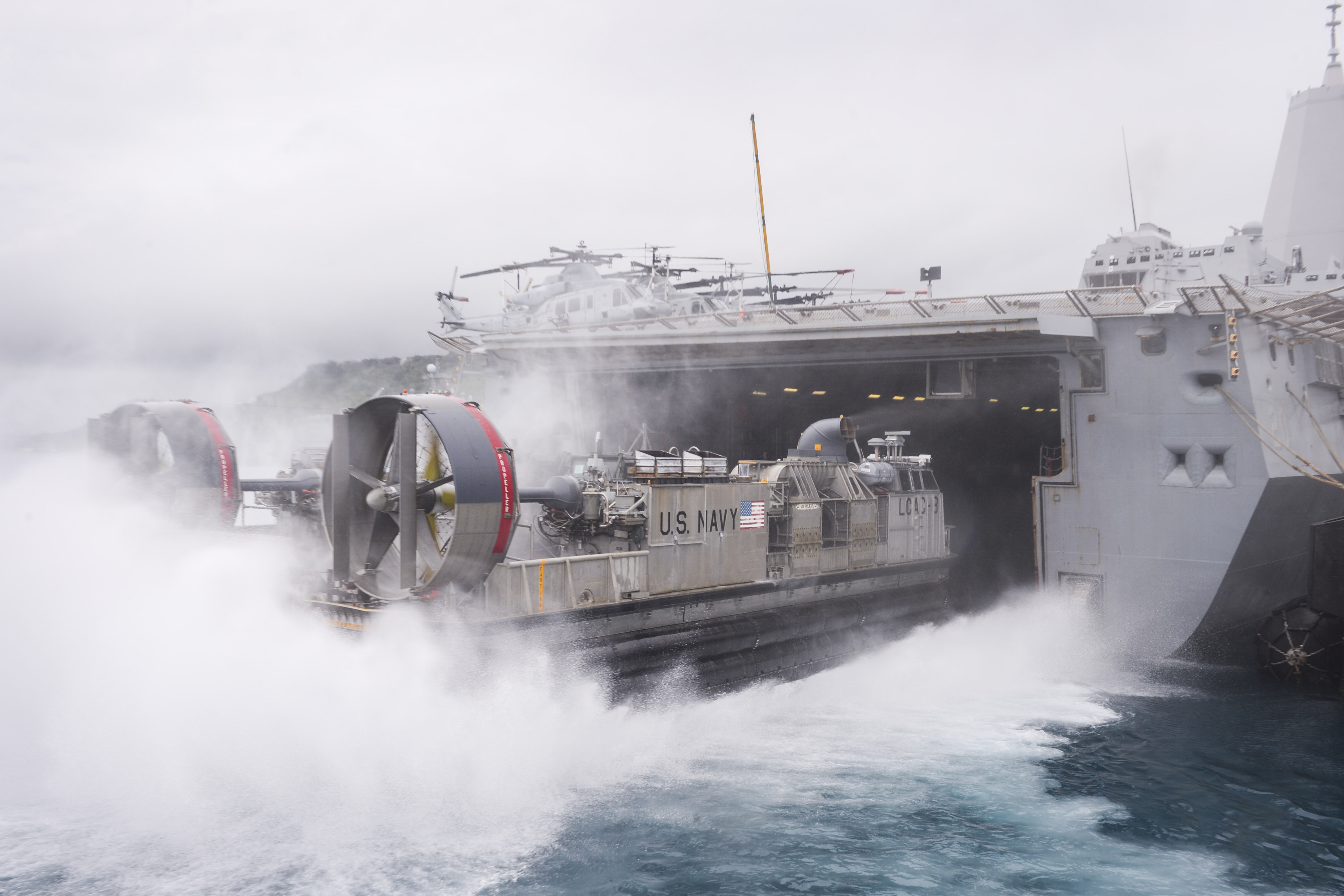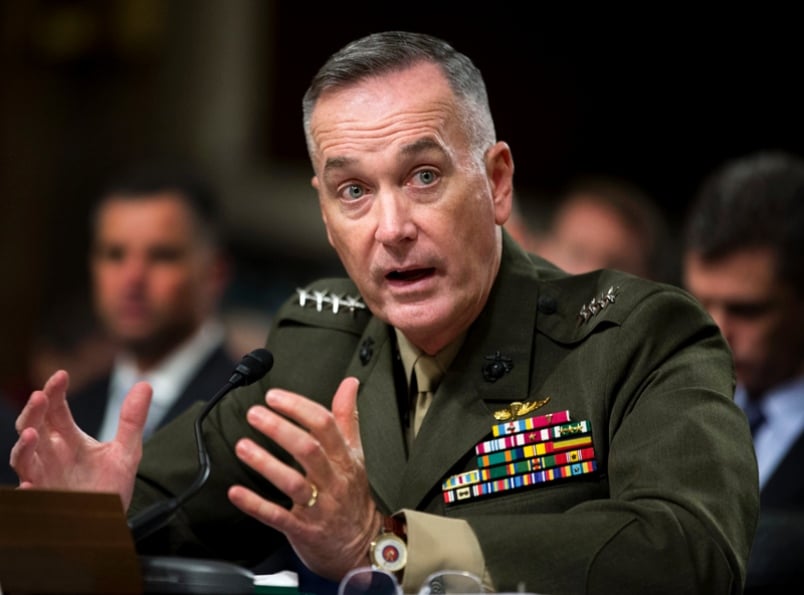
Marines will have to continue to be adaptable to meet growing threats with limited resources by fundamentally rethinking how the Marine Corps organizes and operates, commandant Gen. Joseph Dunford said on Thursday.
Dunford told the Congressional Shipbuilding Caucus on Thursday morning Marines have already adjusted to a high demand signal from the combatant commanders by not only splitting up their three-ship Amphibious Ready Groups (ARG) within COCOMs but also by disaggregating into multiple COCOMs when needed.
Disaggregated operations are “really going to drive changes in our organizational construct, our equipping and training,” Dunford said.
“And the most critical requirements, from my perspective, that we need to address are in the area of command and control.”
He added that the next budget cycle would begin to address those needs.
“We’ll really be focused on facilitating distributed operations, both at sea and ashore, because what I will tell you today is, I’m very proud of the way the Marines are adapting to the current operating environment, and they’re making do with what they have to try to operate, again, across six different countries or split ARG operations. But what I will also tell you is, we’re not optimized for that, and that’s something we’ll be looking at in the future.”
Of particular concern is the disaggregation of forces in the U.S. Pacific Command area of operations. Once the “preferred laydown” in the Pacific is fully implemented, the Marines will have a presence on mainland Japan and the island of Okinawa, South Korea, Guam and Australia – all falling under the 3rd Marine Expeditionary Force structure.
“On a day-to-day basis that kind of distribution will provide us more effective theater security cooperation, working with our partners and so forth,” he said. But conversely, providing the lift capability so the Marines aren’t stranded on an island will be a challenge, given the shortfall in amphibious ships.
 “The second issue, which is also important, is how do you aggregate that force in a contingency? If those forces all represent 3rd Marine Expeditionary Force. That force is the force that would fight on the Korean Peninsula or other O-plans in the theater. So what we need to be able to do is, we need to have sufficient lift to again both to support our day-to-day requirements as well as our aggregation requirements in the event of a contingency.”
“The second issue, which is also important, is how do you aggregate that force in a contingency? If those forces all represent 3rd Marine Expeditionary Force. That force is the force that would fight on the Korean Peninsula or other O-plans in the theater. So what we need to be able to do is, we need to have sufficient lift to again both to support our day-to-day requirements as well as our aggregation requirements in the event of a contingency.”
“My priority right now would be, we’ve got over a thousand Marines in Australia; I would like them to have routine access right now to a platform that they can use to conduct engagement in the area,” he continued.
“But it isn’t just about one ship and it’s just not about one location; it’s about dealing with a logistics challenge, a training challenge, a warfighting challenge in the Pacific with a shortfall of platforms.”
Ideally, in the future PACOM would have two ARGs deployed throughout the theater instead of today’s one-ARG presence. But Dunford said the Marines have to handle today’s problems with today’s resources, so the Marines are looking into a variety of non-amphibious platforms that could carry Marines around the Pacific and elsewhere in the world.
The Navy accepted delivery of the first Afloat Forward Staging Base, USNS Lewis B. Puller (MLP-3/AFSB-1), two weeks ago, and though the ship was built to support mine countermeasures efforts, the Marines have been eyeing the new platform for operations in the Gulf of Guinea in Western Africa. Currently, the closest presence the Marines have to the Gulf is a Special Purpose Marine Air-Ground Task Force (SPMAGTF) operating out of Spain.
“The combatant commander from AFRICOM and the combatant commander from EUCOM have already written a letter to the secretary of defense outlining their requirement for an alternative platform” to support theater security cooperation, embassy evacuations, counter-piracy missions and more, Dunford said.
“They recognize that while a Special Purpose MAGTF provides a great capability, and while the V-22 does mitigate” the great distance between Spain and southern parts of Africa, having Marines on American ships allows more freedom to operate as needed and to sustain the force from the sea without becoming dependent on partners.
Dunford said the AFSB would go into the Global Force Management Allocation Plan like other assets do, but so far the chief of naval operations has been supportive of the Marines’ hope to use the new platform to support Marine crisis response units.
In addition to rethinking where and how to deploy Marines, Dunford said the corps is in the midst of looking at its military occupational specialties (MOSs) to determine what level of training Marines need to become proficient. He noted that a rifle squad is intended to be led by a sergeant, but only 30 of them are; the bulk of the squads are led by lower-ranking Marines with only three or four years of experience.
“You need to be a lot more mature to operate in the kind of environment we’re describing, and I define maturity as a combination of training, experience and education,” he said. The service is going through all the enlisted MOSs, identifying its most critical billets – “if it’s an infantry squad, it’s a squad leader; if it’s a maintenance section, it’s a maintenance chief” – and ensuring that those most critical personnel have the requisite training, experience and education to be successful.





